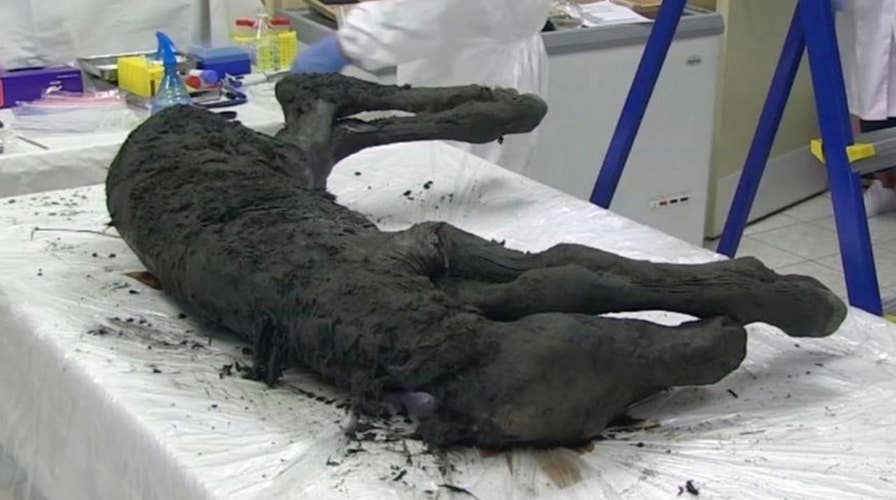Scientists were able to extract liquid blood from the heart of a 42,000-year-old foal that had been frozen and preserved in permafrost in Siberia.
The scientists are hoping to clone the prehistoric horse — which was discovered in the Siberian region of Yakutia last summer — and bring it back to life, according to The Siberian Times.
“We can now claim that this is the best-preserved Ice Age animal ever found in the world,” Semyon Grigoryev, the head of the Mammoth Museum in the regional capital of Yakutsk, told the outlet.
DISCOVERY OF ANCIENT EGYPTIAN DIGNITARY’S 4,000-YEAR-OLD COLORFUL TOMB STUNS ARCHAEOLOGISTS
The foal, which is believed to be from the extinct species Equus lenensis, or Lena horse, was discovered with its skin, hair, hooves and tail all preserved. The foal was believed to be just weeks old when it likely drowned in the mud which later froze and turned to permafrost.
Grigoryev told Russian news agency TASS that finding a preserved horse’s hair was almost unheard of.

In this image made from video, scientists examine the foal carcass that was found last summer in the Siberian region of Yakutia. (AP Photo)
“Having preserved hair is another scientific sensation as all previous ancient horses were found without hair,” he said.
He attributed the preservation of the liquid blood to the favorable burial conditions and permafrost, adding that the internal organs were “beautifully preserved.” Even the muscle tissue maintained its natural reddish color, he said.
‘HUMAN SACRIFICE’ VICTIMS DISCOVERED AT GRUESOME ANCIENT SITE
Scientists with the North-Eastern Federal University in Yakutsk (NEFU) and Sooam Biotech in South Korea are collaborating to extract cells in order to clone the horse. According to The Siberian Times, they are “confident of success.”
They are even reportedly trying to find a surrogate to give birth to the horse.
According to Gizmodo, scientists began a detailed analysis of the foal last month that is predicted to last until the end of April. The scientists have reportedly tried 20 times to extract and grow cells from the animal’s tissue, but those attempts have been unsuccessful.
The foal was discovered in the Batagaika crater, a huge 328-foot deep depression in the East Siberian taiga. The giant crater is known locally as the “doorway to the underworld.”
Fox News’ James Rogers contributed to this report.

